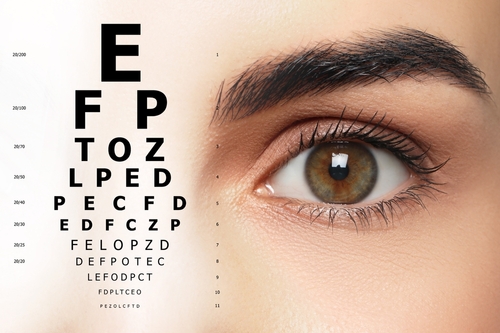
Regular eye exams are essential for maintaining good eye health. A comprehensive eye exam includes checking your visual acuity and thoroughly evaluating your eye health.
Preparing for Your Eye Exam
It is vital to gather information about your medical history. Ensure you also get information about your eye-related concerns before an eye exam. Doing so will help your optometrist or ophthalmologist understand your individual needs better. Bring a list of any current eyewear prescriptions or contact lenses you use.
Testing Visual Acuity
Visual acuity testing is a fundamental aspect of every comprehensive eye exam. The test assesses the ability to see and identify small objects or symbols at various lengths. The most common method is using an eye chart to read letters from a specific distance. The visual acuity test results get recorded as a fraction, with 20/20 indicating normal vision.
Your eye care professional may also test your near vision. It involves reading a small text or performing tasks at a close distance to check how your eyes focus on nearby objects. These tests help determine if you need corrective lenses for near vision, like reading glasses or bifocals.
Your eye care professional can identify refractive errors by assessing your visual acuity. They can check if you have nearsightedness, farsightedness, or astigmatism. Doing so will help provide appropriate solutions to correct your vision.
Assessing Eye Health
Comprehensive eye exams focus on evaluating the health of your eyes. Your eye care professional will examine your cornea, iris, lens, and retina.
They will check for signs of:
Cataracts
Macular degeneration
Glaucoma
Retinal detachment
Eye alignment issues
Depth perception
Problems with peripheral vision
Additional Diagnostic Tests
Your eye care professional may perform more diagnostic tests. They may do so to get a detailed understanding of your eye health.
These can include:
Tonometry — Measures the pressure inside your eyes, helping to detect glaucoma.
Pupil Dilation — Eye drops enlarge the pupils, allowing a better view of the retina and optic nerve.
Visual Field Test — Evaluate your peripheral vision to identify any abnormalities.
Optical Coherence Tomography (OCT) — Produces high-resolution retina images. It aids in the diagnosis and management of retinal conditions.
Fluorescein Angiography — Involves injecting a dye into your bloodstream. Doing so helps to visualize the blood vessels in the retina. It aids in the detection of conditions like macular degeneration or diabetic retinopathy.
Discussion and Recommendations
Once all the necessary tests and assessments happen, your eyecare professional will discuss the findings with you. They will explain any issues detected during the examination. They will also provide recommendations for treatment or further evaluation if needed.
Your eye care professional will prescribe the appropriate glasses or contact lenses if you need corrective lenses. They will discuss lens options based on your needs. These may include lenses like single vision, bifocals, or progressive lenses. They may also recommend specialized lenses, such as those for computer use or sports activities. They may also suggest lifestyle changes or advice on maintaining good eye health.
For more about comprehensive eye exams, visit Valley Vision Associates at our office in Ellensburg, Washington. Call (509) 925-1000 to book an appointment today.







